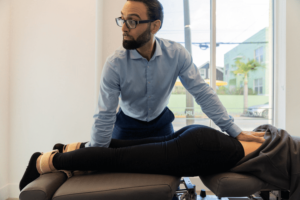Chiropractic adjustments have several benefits; listed below are ten different clinical utilities for how fast joint manipulation can benefit the musculoskeletal system.




Dr. Stavros Begetis graduated Cum Laude from the esteemed University of Bridgeport School of Chiropractic in Connecticut, the first chiropractic program based in an already-established university.
His clinical experience is diverse including being in Phase II outpatient Cardiac Rehabilitation in Yale-New Haven Hospital health fitness facilities as well as having worked over 2,000 hours in outpatient physical therapy as a rehabilitation tech.
Dr. Stavros Begetis graduated Cum Laude from the esteemed University of Bridgeport School of Chiropractic in Connecticut, the first chiropractic program based in an already-established university.
His clinical experience is diverse including being in Phase II outpatient Cardiac Rehabilitation in Yale-New Haven Hospital health fitness facilities as well as having worked over 2,000 hours in outpatient physical therapy as a rehabilitation tech.